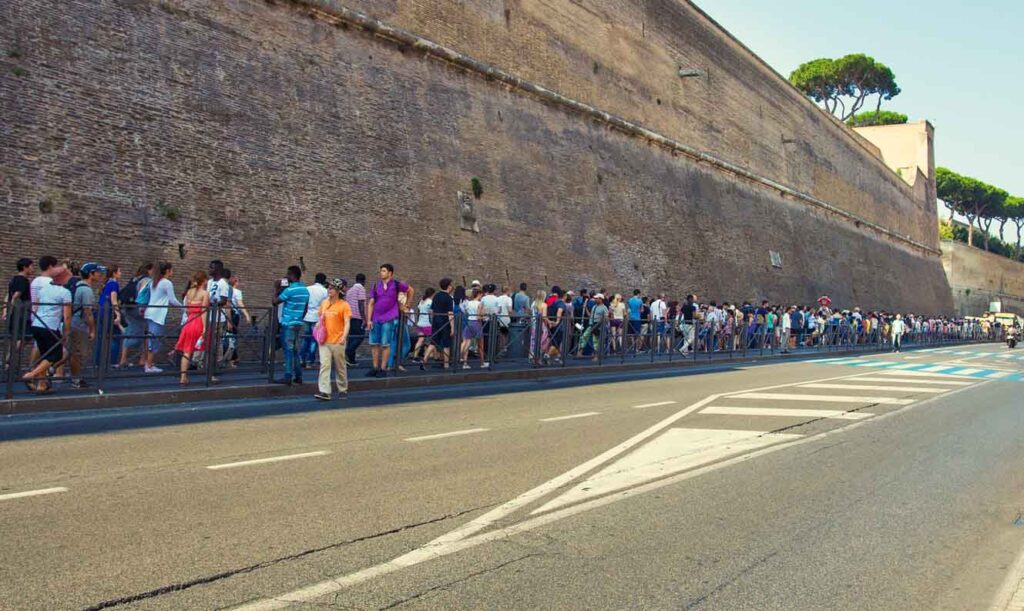Your trip to Rome wouldn’t be complete without experiencing the world-renowned Vatican Museums and Michelangelo’s breathtaking masterpiece, the Sistine Chapel! As one of Italy’s most visited attractions, waiting in long queues can often mean over 3 hours of wasted time. Don’t let that happen to you. Book your Vatican Museums tickets online in advance through the links to secure your fast-track entry and bypass those frustrating lines entirely.
Book your Vatican Museums tickets instantly here, for individuals or groups and enhance your visit with optional audio guides available in multiple languages. Prefer a deeper dive into the Vatican’s rich history and artistic wonders? Join one of the expert-led guided group tours here for an even more enriching experience.
Check Ticket Availability ∇
Powered by GetYourGuide
- Private Tour Guide for Vatican Museums
- Rome City Tour from Civitavecchia
- Fast Entrance Tickets for Colosseum
- St. Peter’s Basilica Guided Tour
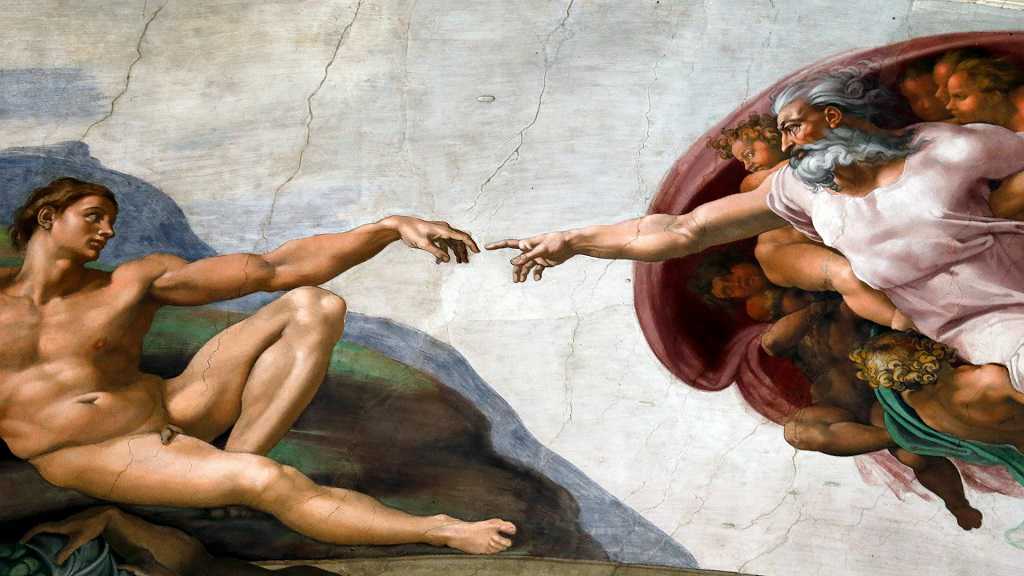
Vatican Museums Ticket Prices & Best Deals (2025)
As of March 2025, entrance tickets and tour options for the Vatican Museums and Sistine Chapel are as follows:
- Vatican Museums & Sistine Chapel Entrance Ticket: Prices start from €32. This ticket provides full access to both the museum and the Sistine Chapel.
- Guided Tour Prices: Range between €49 and €56. Guided tours are highly recommended for an in-depth understanding of the artworks and for making the most of a visit.
Sistine Chapel Tickets: A Must-See Masterpiece
Included with a Vatican Museums ticket, the renowned Sistine Chapel is an absolute highlight within the complex. Famous for Michelangelo’s iconic frescoes like “The Creation of Adam” and “The Last Judgment,” this chapel promises to be one of the most unforgettable moments of a visit. The museum itself spans over 7 kilometers of hallways, housing thousands of sculptures, valuable paintings, murals, Egyptian mummies, and much more, all displayed across 54 galleries. To focus on the most significant artworks without exhaustion, joining a guided tour is highly recommended.
Official Vatican Museums Ticket Fees, Discounts, & Free Entry
The Vatican Museums offer various ticket types and discount options:
- Full Entry Ticket: €32.00 (without online reservation)
- Reduced Entry Ticket: €8.00 (without online reservation)
- ‘Skip-the-line’ Ticket Reservation Fee: Additional €5.00 on top of the base ticket price.
- Reduced Ticket for Schools: €4.00 (without online reservation)
- ‘Skip-the-line’ Ticket Reservation for Schools: €4.00 + €2.00
- Reduced Ticket for Students: €8.00 (without online reservation)
- ‘Skip-the-line’ Ticket Reservation for Students: Total €13.00
- Reduced Ticket for Castel Gandolfo Papal Villas: Discounts available for different visitor groups.
- Free Entry to the Vatican Museums:
- For everyone on the last Sunday of the month (during specific hours).
- Children under 6 years old.
- Certain museum directors.
- Visitors with a disability percentage over 74% and their companions.
- ICOM and ICOMOS cardholders.
- Some university professors.
- ‘Skip-the-line’ Full Entry Ticket: €20.00 + €5.00 (This seems like an older price, please verify this specific price point with the official Vatican Museum site, as your initial text showed €32 for full entry, and €20 + €5 might be for a different type of ticket or an outdated offer. I’ve kept it as per your original text but flagged it for verification.)
- Reduced Ticket for Pilgrims: €8.00 (without online reservation)
- ‘Skip-the-line’ Ticket Reservation for Pilgrims: Total €13.00
- Reduced Ticket for University Institutes: €8.00 (without online reservation)
- ‘Skip-the-line’ Ticket Reservation for University Institutes: Total €13.00
- Reduced Ticket for Seminaries and Religious Colleges: €4.00 (without online reservation)
- ‘Skip-the-line’ Ticket Reservation for Seminaries and Religious Colleges: €4.00 + €2.00
- Family Rate: Special discount for parents with at least two children for tours of the Castel Gandolfo Papal Villas. Free for children aged 0-5 and for the second and subsequent children.
Important Note: To confirm the latest information regarding free entry days and special discounts, it’s essential to check the official Vatican Museums website for the most current details.
Vatican Museums Opening Hours & Closure Dates (2025)
The Vatican Museums and the Sistine Chapel are open Monday to Saturday from 08:00 to 20:00, with the last entry at 18:00.

Additionally, they can be visited for free on the last Sunday of each month, from 08:00 to 14:00, with the last entry at 12:00. However, due to the high number of visitors on these free days, access can be extremely challenging. Booking tickets in advance is highly recommended to ensure a visit.
Please consult the following 2025 closure calendar to avoid scheduling a visit on a closed date:
- January 1 & 6
- February 11
- March 19
- April 21
- May 1
- June 29 (Note: this is the last Sunday of the month, but it is also a closure day)
- August 15 & 16
- November 1
- December 8, 25 & 26
- On December 24 and 31, the museums operate on reduced hours, from 08:00 to 15:00.
How to Get to the Vatican Museums: Location & Transportation
The Vatican City and its Museums are conveniently located near the city center, bordering the Borgo district.
Getting to the Vatican Museums
- By Walking:
- From Navona Square: Approximately 2.6 km (25 minutes walk)
- From Popolo Square: Approximately 3 km
- From Venezia Square: Approximately 3.5 km
- By Metro:
- Take the red “Line A” and alight at the Ottaviano – St. Peter Station. From here, it’s just a few minutes’ walk to the Vatican Museum entrance and about 5 minutes to St. Peter’s Basilica. This metro line also connects to Termini Train Station and the Spanish Steps.
- By Tram:
- Take Line 19, which runs from Villa Borghese to Piazza Risorgimento (near the Vatican). This line starts near Piazza Popolo.
- By Public Bus:
- Bus lines 40 (express), 64, 62, and 81 pass by the Vatican area.
Where is the Museum Entrance?
Visitors often first arrive at St. Peter’s Square, in front of St. Peter’s Basilica, where hop-on hop-off buses also drop off passengers.
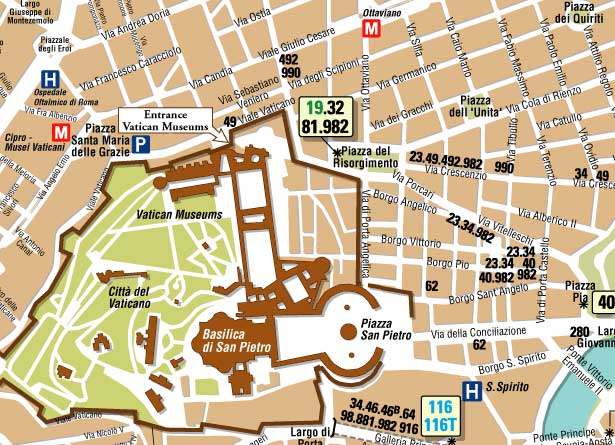
However, the entrance to the Vatican Museums is located at the northern gate, near Piazza del Risorgimento. To reach the museum entrance from St. Peter’s Square, walk along the Vatican walls on the right side for 5-10 minutes.
What to See in the Vatican Museums: A Journey Through Art History
The Vatican Museums house an unparalleled collection of art and historical artifacts. Here are some of the most important artworks and galleries to see:
1. Raphael Rooms (Stanze di Raffaello)
These four halls represent the first publicly accessible part of the Vatican Palace (also known as the Papal Palace). Opening into the Belvedere Courtyard, they feature two masterpieces by Raphael, one of the Italian Renaissance’s most important artists:
- The School of Athens (Scuola di Atene): This painting embodies the classical spirit of the Italian Renaissance, depicting famous philosophers and scientists of Ancient Greece. The architecture within the painting reflects Roman rather than classical Greek elements. Look for Plato and his student Aristotle, in blue and red attire, at the center.
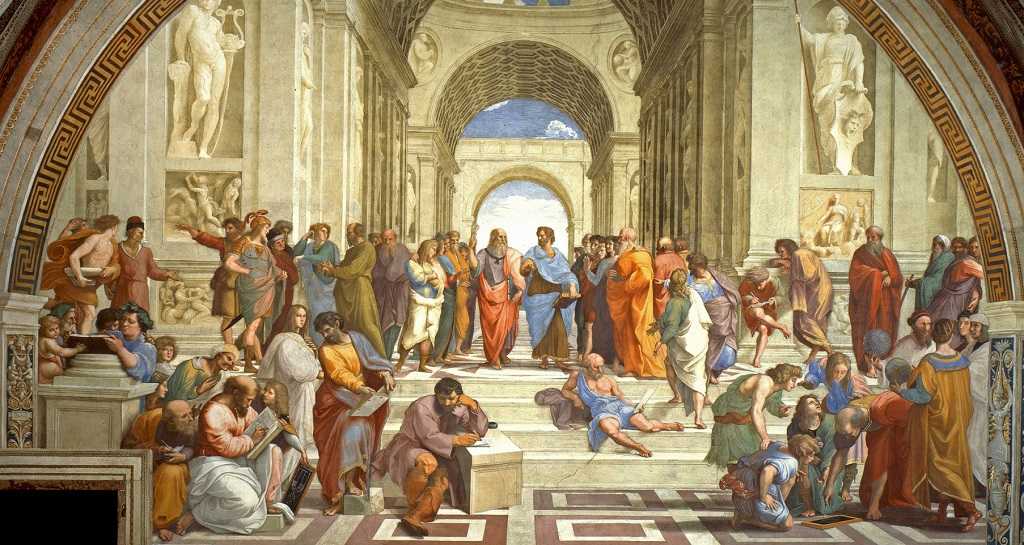
- Deliverance of St. Peter (Liberazione di San Pietro): This fresco illustrates St. Peter’s miraculous release from Herod Agrippa’s prison with the help of an angel. The painting has three scenes: the angel awakening St. Peter (middle), leading him past sleeping guards (right), and a guard reacting to the angel’s light (left). The backlit scene is particularly impressive.
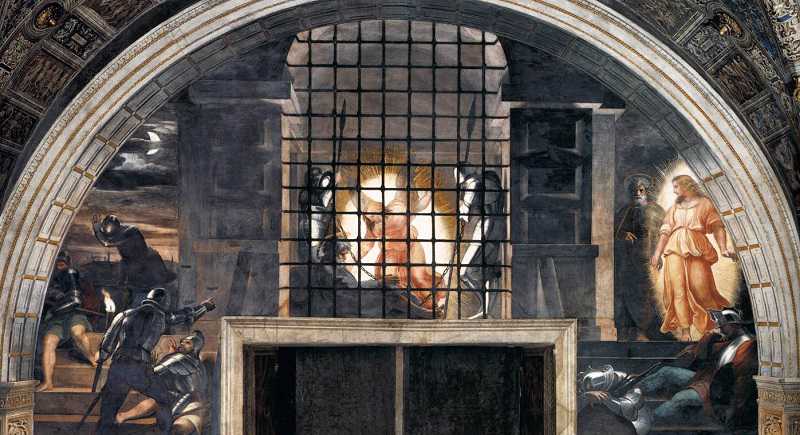
2. Gregorian Egyptian Museum
Established by Pope Gregory XVI in 1839, this collection largely comprises artworks brought by the Romans from Egypt, some from Villa Adriana in Tivoli, and others acquired from private collections in the 19th century. The nine-room Egyptian section exhibits sculptures, clay and bronze figures, and monumental artworks. The last two rooms also showcase ancient artifacts from Mesopotamia, Syria, and Palestine.
3. Vatican History Museum and Papal Portraits
Opened in 1973, this is one of the museum’s newer sections. It displays portraits of all popes from the 16th century to the present day. One can also see fascinating designs of “papamobiles” – the vehicles used to transport the popes.
4. Papal Thrones
Here, one can see the Papal Throne made of red marble, brought from San Giovanni di Laterano Basilica, Rome’s former diocese. Red marble symbolizes reign and empire. The throne is adorned with mosaics and frescoes, and its armrests feature lion figures.
5. Gallery of Maps
This 120-meter-long hall, shaped like a corridor, is located on the west side of the Belvedere Courtyard. Designed over three years and completed in 1580 by Ignazio Danzi, the gallery showcases 40 colored topographic maps on its walls. The stunning ceiling frescoes are a major highlight.
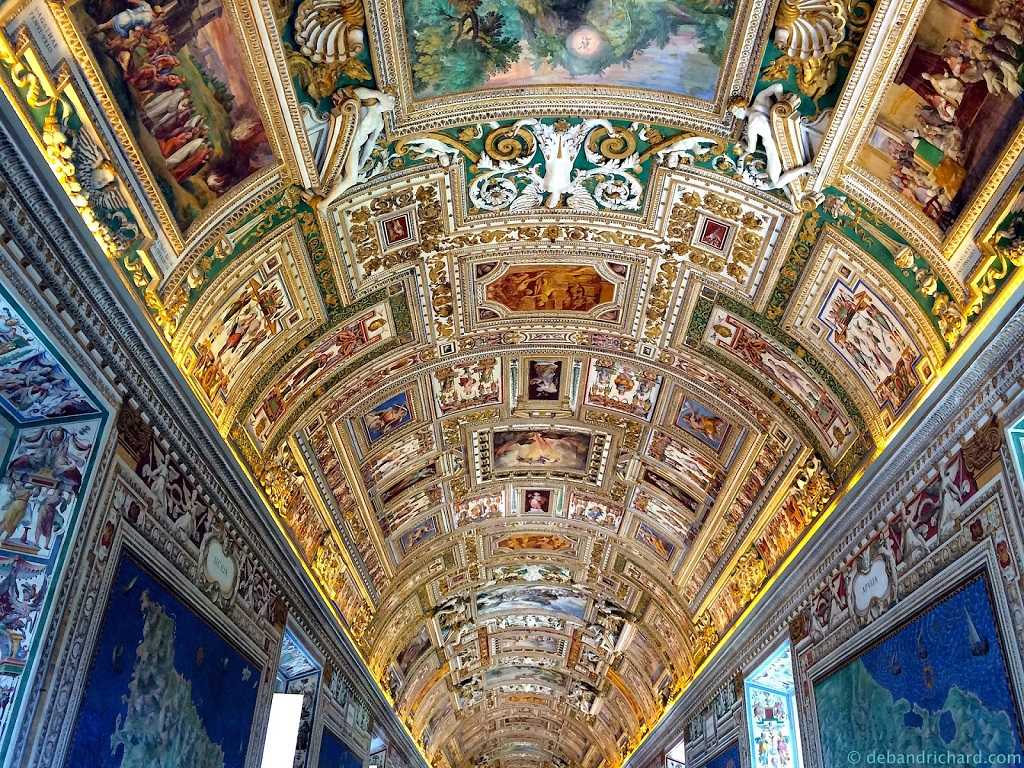
6. Sala Rotonda
If one has visited the famous Roman Pantheon, a resemblance in this hall will be noticed. Designed in the Ancient Roman style, its alcoves are adorned with valuable statues and its floor with mosaics. The gold-plated Hercules statue and the red marble basin (rescued from Nero’s famous Golden House near the Forum Area) where rainwater accumulated, are particularly noteworthy.
7. Gallery of the Statues (Pio Clementino Museum)
Once the loggia of Pope Innocent VIII’s Palace, this gallery was enclosed with window walls in the 18th century to exhibit statues. It continues into the “Gallery of Busts.” Most exhibited artworks are statues from Ancient Rome and the Renaissance. While parts of the original frescoes, mosaics, and landscapes are still visible, the statues were placed later for exhibition. The Apollo Belvedere Statue, a Roman replica of an Ancient Greek bronze, has long symbolized the perfection of the male body’s aesthetics.
“Laocoon and His Sons” is another iconic sculpture to see, depicting the agonizing killing of the Trojan priest and his sons by snakes sent by the goddess Athena.
8. Pinacoteca Vaticana
Comprising 18 halls, this is arguably the most perfect and richest painting gallery in Rome. It is rare to find so many masterpieces together in another place in Italy. It is highly recommended not to miss the following paintings:
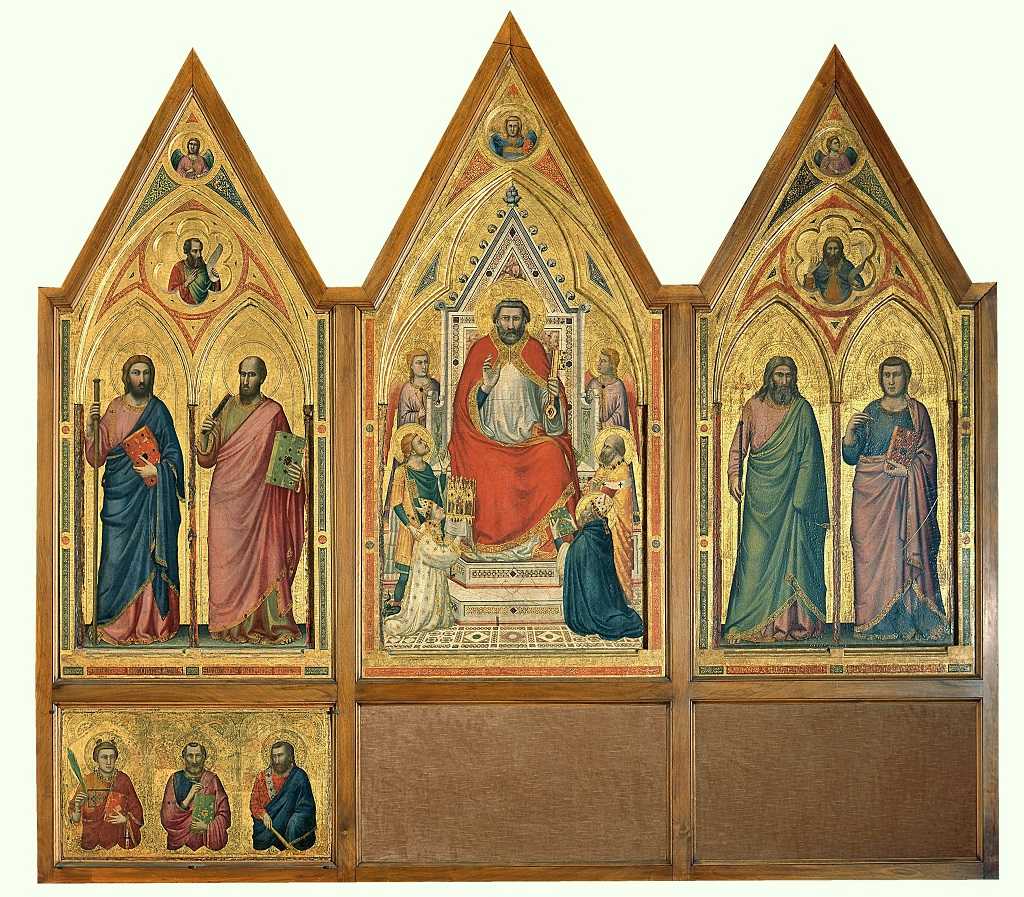
- Caravaggio – Deposition from the Cross
- Raphael – Madonna of Foligno
- Raphael – Transfiguration
- Giotto – Stefaneschi Triptych
- Pietro Perugino – Madonna and Child with Saints
- Leonardo da Vinci – St. Jerome
- Guido Reni – Crucifixion of St. Peter
9. Sistine Chapel
As detailed above, this unparalleled chapel, accessible with a Vatican Museums ticket, is a pinnacle of art history, featuring Michelangelo’s breathtaking frescoes.
10. Bramante Staircase (Spiral Stairs)
There are two staircases in the Vatican Museums known as the Bramante Staircase. One, built in 1505, is located in the Belvedere Palace tower. The famous one, often called the New Bramante Staircase, is in the Pio Clementine Museum.
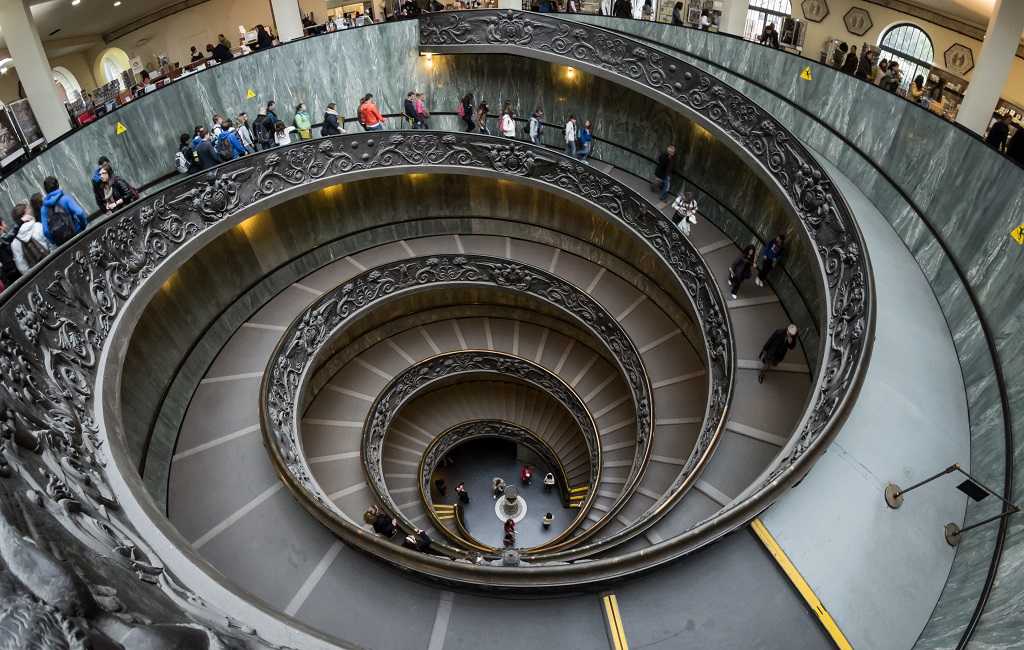
It is hard to miss, as visitors will likely use it for both entry and exit. Designed by Giuseppe Momo in 1932, inspired by the older one, this monumental spiral staircase—also known as the “snail staircase”—is one of the most photographed staircases in the world. Its double-helix design ensures that people ascending and descending do not meet.
Further Resources & Ticket Sales Links
- Official Vatican Museums Website: Visit the Musei Vaticani Official Website
- Vatican Museum Entrance Tickets (Skip-the-Line): Buy tickets here
- Vatican Museums Guided Tour Bookings: Book a tour here
- Private Tour Guide in Rome Bookings: Arrange a private tour here
Frequently Asked Questions (FAQs) about the Vatican Museums
Should tickets for Vatican Museums be bought in advance?
Yes, it is highly recommended to purchase Vatican Museums tickets online in advance to skip the long queues and guarantee entry, especially during peak seasons (summer, holidays).
Does a Vatican Museums ticket include the Sistine Chapel?
Yes, a Vatican Museums entrance ticket includes access to the Sistine Chapel, as it is an integral part of the museum complex.
Is there a dress code for visiting the Vatican Museums?
Yes, as the Vatican City is a religious site, visitors are required to wear modest clothing that covers shoulders and knees. Shorts, mini-skirts, sleeveless tops, and low-cut attire are not permitted.
Can photos be taken inside the Vatican Museums?
Generally, flash-free photography is permitted in many parts of the museums. However, photography and video recording are strictly prohibited inside the Sistine Chapel.
How long does it take to visit the Vatican Museums?
The Vatican Museums are vast, housing thousands of artifacts. An average visit typically takes 3-4 hours. If one wishes to explore all galleries in detail, this period could extend.
When is the best time to visit the Vatican Museums to avoid crowds?
Generally, the museum is less crowded right after opening (around 08:00 AM) or closer to closing time (after 4:00 PM). Weekdays, particularly Tuesday, Wednesday, and Thursday, tend to be less busy than weekends.
Is there disabled access at the Vatican Museums?
Yes, the Vatican Museums provide accessibility features for visitors with disabilities, including elevators and ramps. Visitors with a disability percentage over 74% and their companions are granted free entry.
